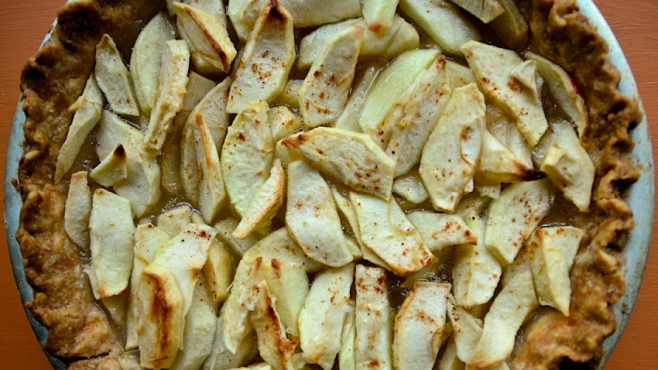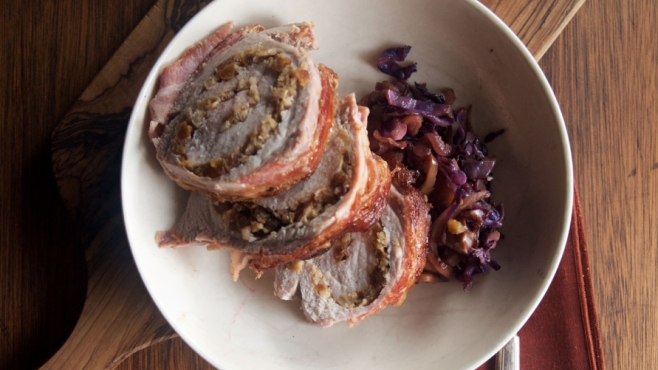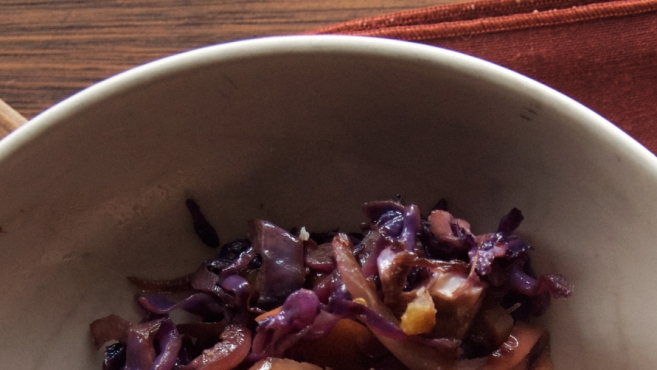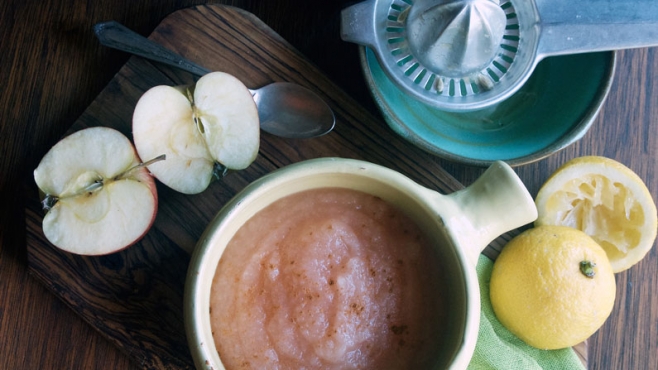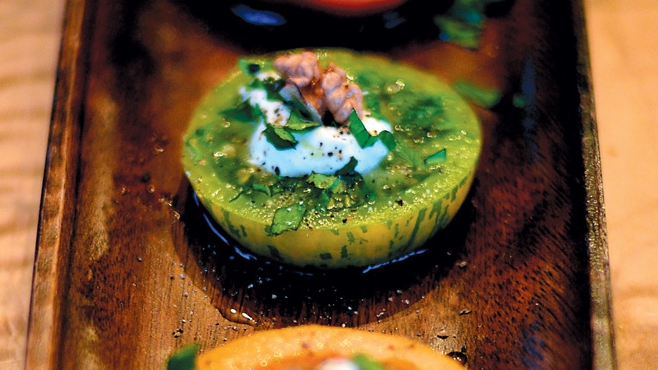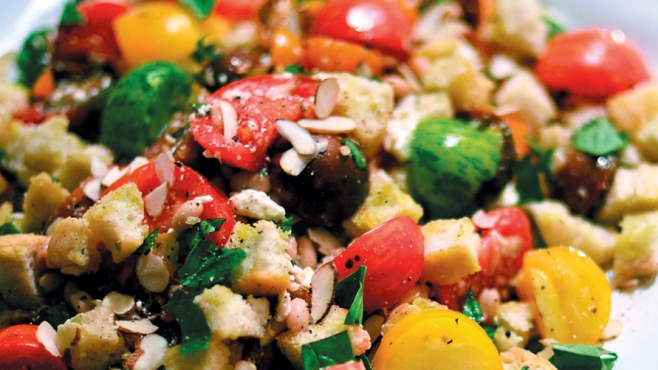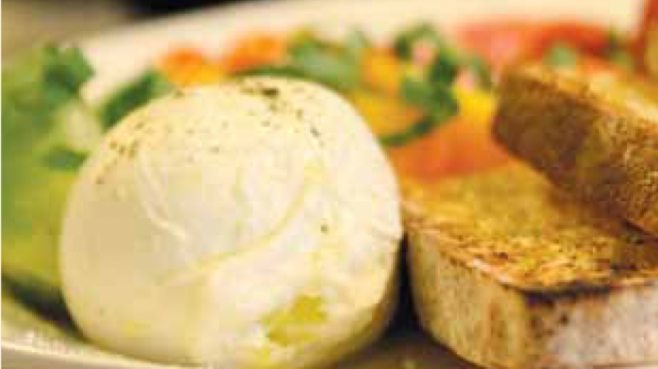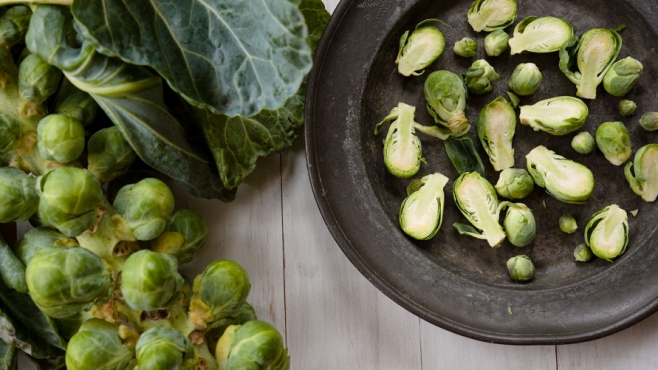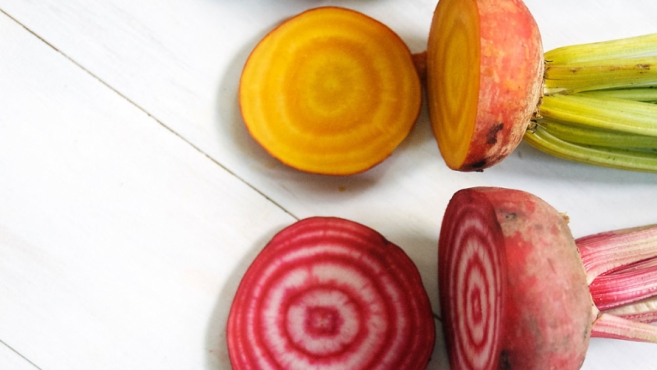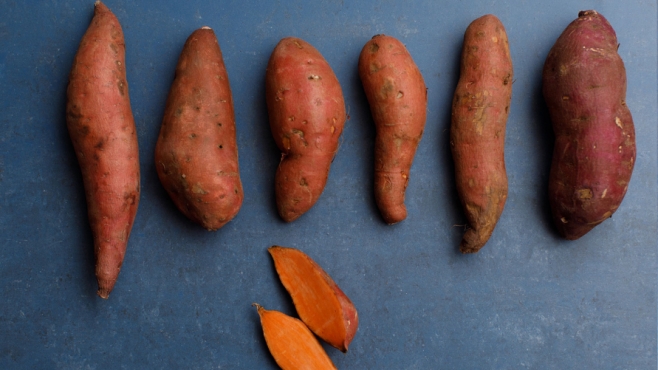Heirloom Apples
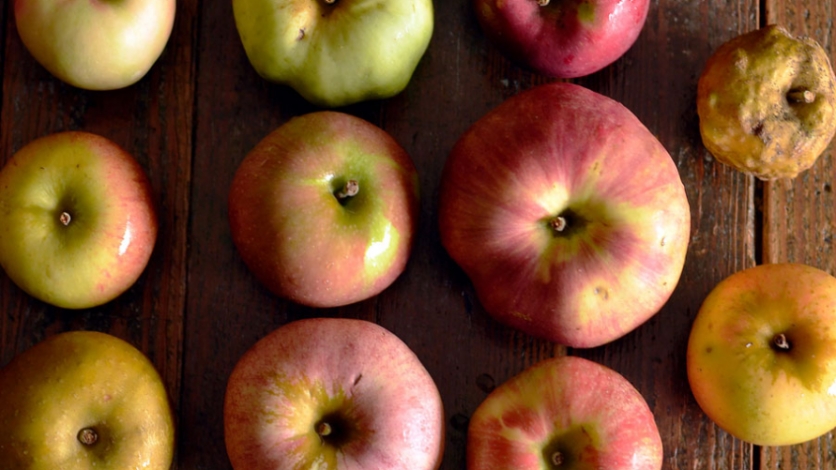
In Thoreau’s time, there would have been hundreds of varieties of apples—from the sweet and crisp Golden Russet to the spicy Esopus Spitzenberg (said to be Thomas Jefferson’s favorite)—dotting the hillsides and orchards of American farms. There were varieties for baking, eating, drying, cider making and distilling, offering unique flavors from tart and acidic to floral and sweet. With the rise of “modern” agriculture, however, many varieties of apples, often not perfect to look at or not suited for shipping long distances, began to disappear from American tables.
Luckily for us, today innovative orchardists and preservationists in Michiana are moving beyond produce-aisle standards like Granny Smith in favor of old-fashioned and heirloom varieties. Look for heirloom (or “heritage”) apples at local farmers markets and orchards, like Tree-Mendus Fruit Farm, which grows over 200 varieties of apples (along with other fruits, including heirloom pears) in Eau Claire, Michigan.
Heirloom apples are used for baking, sautéing, eating fresh, drying, vinegar, cider (hard and sweet), deep frying, grilling, poaching and more.
 Like other apples, heirloom varieties can be paired with a wide range of foods. Try some of these less familiar options for new flavor combinations: bacon, bay leaf, black pepper, blackberries, bourbon, cabbage, cardamom, celery, chestnuts, chicken, chives, Cognac, Cointreau, coriander, crème fraîche, cumin, currants, curry powder, dates, duck, eggplant, fennel, frisée, greens, hazelnut, horseradish, lemon, lemon thyme, Madeira, molasses, mustard, olive oil, parsley, pepper, pine nuts, pistachios, plums, pumpkin, rhubarb, rosemary, sauerkraut, sherry, sour cream, star anise, sweet potato, tarragon, thyme, vermouth, vinegar or yogurt.
Like other apples, heirloom varieties can be paired with a wide range of foods. Try some of these less familiar options for new flavor combinations: bacon, bay leaf, black pepper, blackberries, bourbon, cabbage, cardamom, celery, chestnuts, chicken, chives, Cognac, Cointreau, coriander, crème fraîche, cumin, currants, curry powder, dates, duck, eggplant, fennel, frisée, greens, hazelnut, horseradish, lemon, lemon thyme, Madeira, molasses, mustard, olive oil, parsley, pepper, pine nuts, pistachios, plums, pumpkin, rhubarb, rosemary, sauerkraut, sherry, sour cream, star anise, sweet potato, tarragon, thyme, vermouth, vinegar or yogurt.
Selecting: Choose heirloom apples without soft spots or visible damage. Remember that some of the best-tasting apples are often a bit “ugly”—small or marred with mottled skin. Ask your vendor/farmer what is the best use of the variety you are looking at and ask for a sample taste.
Storage: All apples need to be stored in the refrigerator or a root cellar. Pull out any bruised or damaged ones because one bad one really can spoil the rest.


